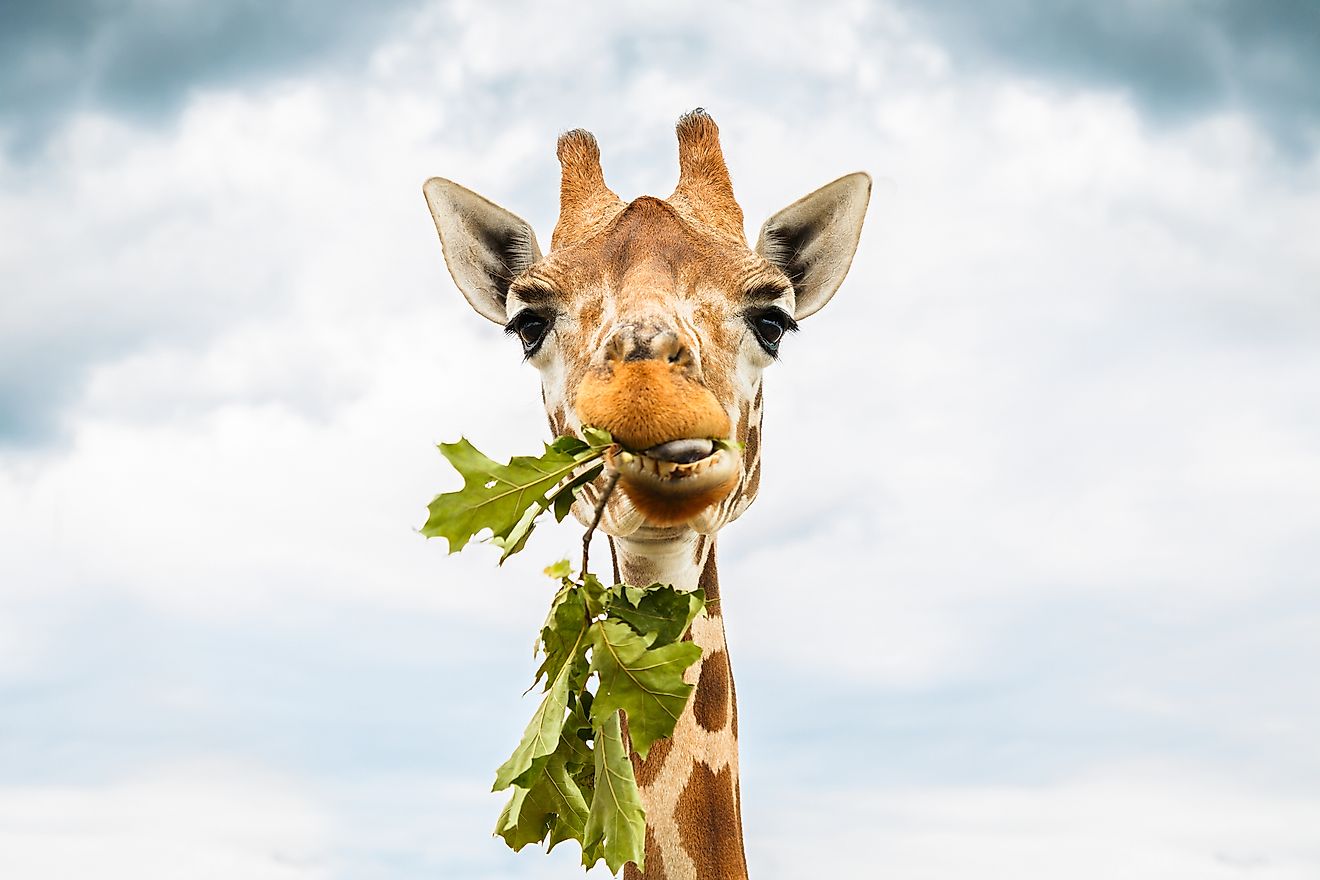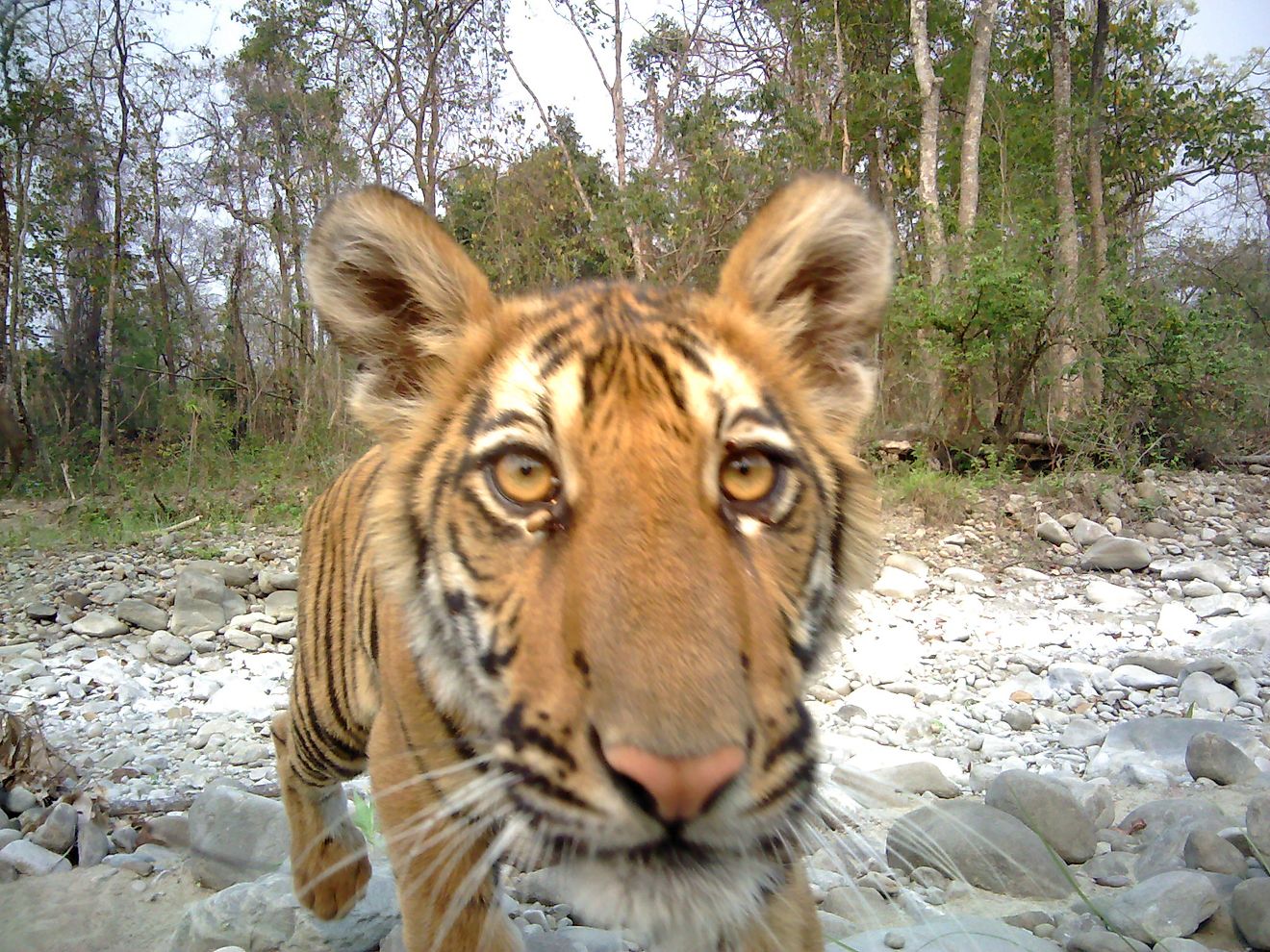What Is A Herbivore?

- Herbivores depend on plants to survive as it is their only source of energy and are sources of food for many secondary consumers.
- Ruminants are herbivorous animals that have specialized stomachs to aid in plant digestion.
- A study found that herbivores not only help maintain biodiversity but can make ecosystems more resilient to stressors.
Herbivores are plant-eating organisms that can range in size from tiny insects to large mammals. Their diets consist of vegetation such as grasses, leaves, fruits, vegetables, bulbs, and roots. Herbivores do not feed on insects, spiders, fish, or other animals. Many herbivores spend most of their life eating. For example, elephants need to eat about 300 pounds of food a day, sometimes eating up to 18 hours per day. The reason for this behavior is that it takes a significant amount of time to consume many leaves and grass.
There are many different types of herbivores, and they can be aquatic and non-aquatic creatures. The largest herbivore is the African elephant, which can grow up to eight to 12 feet tall from foot to shoulder and weigh between 5,000 to 14,000 pounds. The featherwing beetle is one of the world’s smallest herbivores, measuring only 0.0127 inches.
Herbivores And The Food Chain

Herbivores play an essential role in the food chain. The food chain is categorized into three trophic levels. The first level consists of autotrophs, or primary producers, which produce their own food. The second level is made up of herbivores, also known as primary consumers, which eat autotrophs. The third level has carnivores and omnivores, secondary consumers, and can eat both autotrophs and herbivores. Herbivores depend on plants to survive as it is their only source of energy. If the plant population drastically declines, herbivores will not eat enough food and may end up starving. Herbivores are sources of food for many secondary consumers, and a decline in their population can cause a ripple effect through the food chain.
Herbivore Feeding Behavior
Herbivores’ feeding behaviors vary between creatures. Some herbivores, like elephants, will eat any plant matter, from leaves to small branches. Other herbivores stick to a specific type or part of a plant. Herbivores can be grouped into six categories of feeding behavior: frugivores, granivores, nectarivores, folivores, xylophages, and detritivores.

Frugivores: Frugivores, such as oilbirds, fruit bats, and flying foxes, primarily eat fruits.
Granivores: Granivores eat seeds, and many creatures eat them in numerous ways. For example, some bugs suck out seeds’ insides while other animals use their front teeth to chew the seeds.
Nectarivores: Nectarivores consume nectar from plants. An example is honey bees that feed on pollen and nectar from flowers.
Xylophages: Herbivores that eat wood are called xylophages. These creatures include termites and Asian long-horned beetles.
Detritivores: Finally, detritivores consume only dead plant material. They are essential in the food chain as they break down dead organic matter and recycle the nutrients back into the ground. Examples of detritivores are earthworms.
Herbivores can also be classified into three different groups: grazers, browsers, and intermediate feeders.

Grazers: Grazers feed on vegetation that grows on the ground, like grasses. Cows and horses are examples of grazers, and these animals play an essential role in maintaining balance in an ecosystem. They help stop plants from growing too tall and blocking sunlight from other plants. However, too many grazers in one area can cause erosion and desertification.

Browsers: Browsers eat high-growing plants, like leaves or shrubs. Giraffes and white-tailed deers are browsers.
Intermediate feeders: Intermediate feeders, such as sheep, fall in between browsers and grazers. They possess characteristics found in both grazers and browsers, and therefore, they can eat selectively and consume both vegetations on the ground and leaves from branches.
Physiological Characteristics Of Herbivores
Generally, plants have rigid cell walls that make them difficult to digest. Since herbivores’ diets mainly consist of plants, they have developed features that make it easier for them to break down and digest the fibrous matter. Herbivorous mammals tend to have big, broad molars that help them grind up plant matter. This process helps release the plant’s nutrients. Some plant-eating animals have sharp teeth that are used for fighting and not feeding. In contrast, carnivorous animals have long, sharp teeth for tearing into prey.

Herbivores have also developed organs that aid with plant digestion, such as specialized stomachs. Animals with this feature are called ruminants. Examples of ruminants are camels, giraffes, and cattle. They digest food through foregut fermentation, where bacteria processes and break down food before it is digested in the stomach’s final chamber, called the “true stomach.”

Ruminants’ stomachs have multiple chambers that help them digest plants. When ruminants swallow grass or leaves, it moves into the first chamber, where it softens. This compartment is called the rumen. Specialized bacteria in the stomach breaks down the food, and once the food is soft enough, the ruminant will regurgitate the partially digested food, called cud, and chew it again. This further breaks down the plant matter, and when the animal swallows the cud, it moves into the second chamber. Then, the animal brings the cud back up and chews it again. It moves into the third chamber before finally settling into the fourth and final chamber, which is similar to a human stomach.
Other herbivores, such as horses, zebras, and rabbits, digest food through hindgut fermentation. These animals do not have multiple chambers in the stomach. Through hindgut fermentation, bacteria process and breaks down food in the latter part of the gut. As a result, hindgut fermenters have a small stomach and larger colon and cecum. Although hindgut fermentation is a faster process, it is less efficient than foregut fermentation. Therefore, animals that use this process have to eat large amounts of food in a shorter time. Not all herbivores use these two types of digestion. Some creatures have enzymes that can break down cellulose without bacteria.
Herbivore’s Impact On Biodiversity

There have been numerous studies done over the years that show the importance of herbivores in their ecosystem. Researchers from various universities analyzed the ecosystem impacts of large megafauna extinctions in North and South America. They found that the disappearance of these large plant-eaters (mastodons and mammoths) resulted in long-lasting alterations in the landscape. Studies have suggested that the loss of large animals in the Yukon and Alaska caused the once fertile landscape to turn into the barren tundra that dominates the area today.
Researchers have found that if a top predator or important herbivore disappears from its ecosystem today, it can result in drastic changes in the ecosystem that last for thousands of years. However, researchers also found that not all extinctions caused significant changes. Landscape alterations depend on how the animal interacts with its environment.
Another study by Stanford University conducted in the African savanna found that removing large herbivores in the ecosystem can cause dramatic changes within a food chain. The research team separated herbivorous mammals from the experimental areas and monitored the location for over a year. The research team found that in the absence of the large herbivores, the number of other plant and animal species, such as trees and lizards, increased in number. This process is an example of cascading effects.
Herbivores have also been important in maintaining biodiversity in areas where specific plant species are incredibly dominant. For example, herbivores in the American Midwest play a crucial role in preserving biodiversity in the region. The plant-eaters consume dominant, fast-growing grasses, preventing them from outcompeting slower-growing plants in the area.
Importance In Climate Change
A 2017 study suggests that herbivores can help protect ecosystems from climate change. Researchers created a mini-ecosystem on the shores of a British Columbia island and built ecosystems on plastic plates so researchers could control the temperature. In some of the plates, they added herbivores called limpets, and in other plates, they kept the creatures out.
The study focused on the intertidal zone, an area between low and high tide that experiences extreme temperature variations daily. When the researchers heated the plates, they found that the communities where limpets were present were better at handling the temperature spike. Researchers concluded that herbivores not only help maintain biodiversity but can make ecosystems more resilient to stressors.
Herbivores are creatures that primarily eat plants for energy. Many herbivores have specialized stomachs that help them break down tough and fibrous plant matter. While herbivores sit somewhere in the middle of the food chain, many studies have found that they play an essential role in preserving their environment’s biodiversity and may even help protect it from the effects of climate change.











